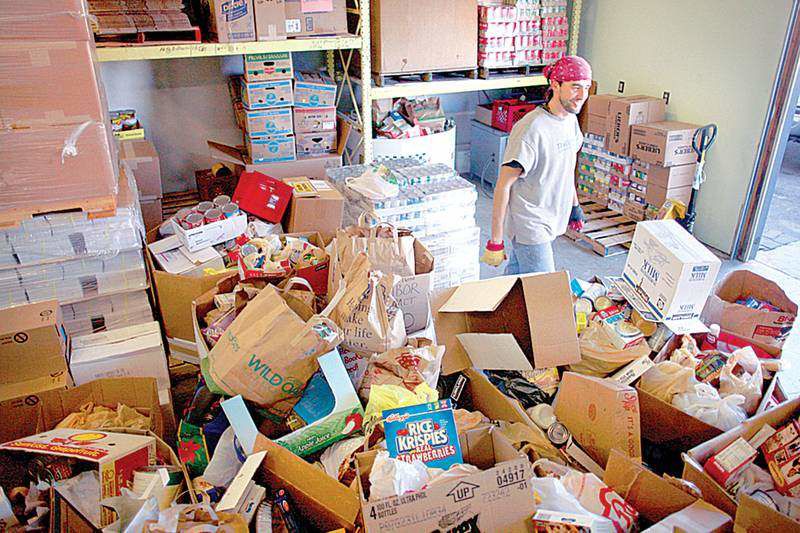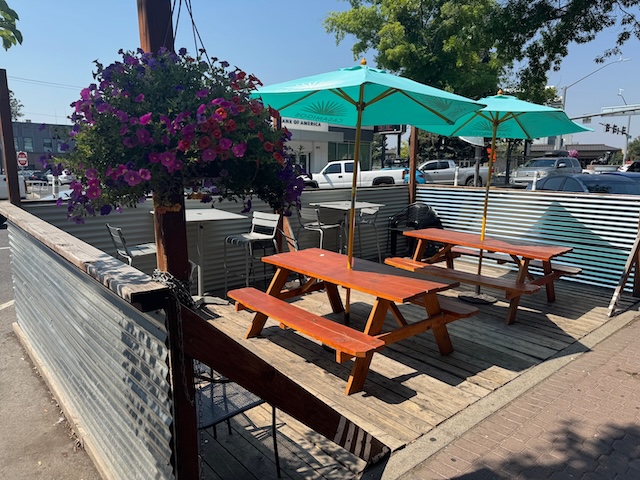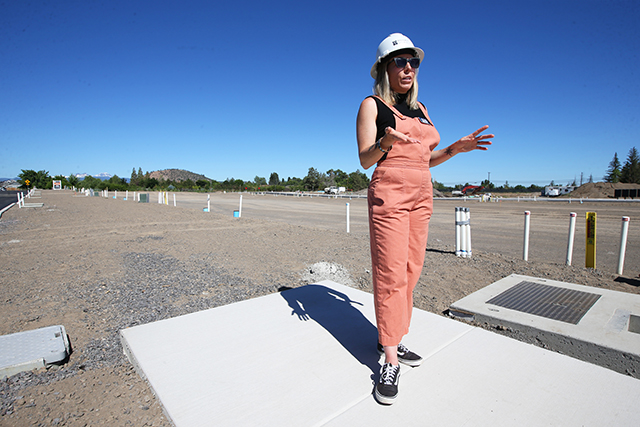Check out the charity before you cut a check
Published 4:00 am Wednesday, December 5, 2007

- NeighborImpact food operations specialist Brooks Luongo leaves the warehouse Monday after putting a box of food in place at the Redmond facility. Nonprofits like NeighborImpact receive the majority of their cash donations this time of year, and there are myriad opportunities to give.
Holiday gifts, of cash and other items, are critical for many charitable organizations. The spirit of giving and the benefits of tax deductions meet during the holidays when charitable giving reaches its highest levels.
“A lot of nonprofits get as much as 50 percent of their funding around the holidays,” Bend’s Community Center Executive Director Taffy Gleason said. The center provides hot meals and clothing, blankets and other items to those in need.
Trending
But sorting through the seemingly endless number of worthy causes — and avoiding any scams — can be a dizzying task.
In order to give wisely, people need to be willing to do a little homework, according to Victoria Cox, spokeswoman for the Charitable Activities Section of the Oregon Department of Justice.
Most of all, she said, it’s usually better to take the initiative instead of responding to a phone call, letter or e-mail.
People should generally only respond to solicitation from organizations they have a relationship with, such as one they have donated to before, she said.
“If out of the blue you get a solicitation from someone you’ve never heard of, be very suspicious,” Cox said.
Be wary of the hard sell, suggests Dwight Heaney, executive director of St. Charles Foundation, which supports health care in Central and Eastern Oregon. Every charity has a good story, said Heaney, but don’t let that stop good research. “If they try to make you give a gift before you have a chance to research, you might have reason to be cautious.”
Trending
What interests you?
When first considering where to put dollars, Cox said, people should identify what interests them.
“Choose your ‘mission,’ ” she said. “What do you want to support? Is is local, is it statewide, is it national, is it global?”
NeighborImpact Food Bank Coordinator Steve Murray agreed with that advice.
“Find your area of interest, and you can probably find a good organization in this part of the country that does that work,” he said.
Cox said some Web sites allow people to search for charities by topic and location.
Deschutes United Way also will help guide people to charities that fit their interests, said Executive Director Ken Wilhelm. Another resource is the Community Resource Book, assembled by the Central Oregon Family Resource Center. The booklet can be downloaded from the center’s Web site, and it covers a range of charities including child care, education and legal services.
Research your options
Next, Cox said, go to organizations that rate charities, such as Charity Navigator or the Better Business Bureau.
By doing some research, she said, “you’re avoiding organizations that are spending 70 to 80 percent (of donations) on fundraising, and very little on program services.”
The Better Business Bureau, for instance, requires a charity to spend at least 65 percent of its budget on services — not fundraising or management — to be approved.
To evaluate smaller organizations that may not be reviewed by the Better Business Bureau or Charity Navigator, Cox said people should go to GuideStar .org. GuideStar posts the Internal Revenue Service’s Form 990s from nonprofits, which contains information about the organization’s finances.
“What you want to look at is their expenditures,” she said. “They have to break down their expenditures (into) programs, what they do, (and) what they spend on fundraising and management.”
Murray said people can also contact local charities directly to ask how their contribution will be used.
“People should be able to get a good feeling from that,” he said.
Cox said people should resist donating money over the phone largely because it can be very inefficient. Nonprofits that ask for donations by phone often rely on telemarketing businesses.
The standard fee for that service, Cox said, is roughly 70 percent of any money raised.
Standard rules apply
And when donating, she said, use the same methods that guard against identity theft.
“It’s the typical stuff, never give out your credit card information over the phone, give a check, don’t give cash unless you’re talking about the Salvation Army bucket,” she said.
Similarly, don’t donate in response to an e-mail because the link provided may not be legitimate, she said.
“Giving online is fine, but you want to surf to the site yourself instead of following a link,” she said.
And if anyone tries to pressure you into giving, particularly over the phone, look out.
Cox said high-pressure tactics, typically over the phone, and reluctance to give out information are red flags that the “charity” is probably a scam.
“If you say, ‘I’m not comfortable, will you send me some information?’ reputable organizations will always be willing to do that,” Cox said.
People should also be suspicious of sweepstakes for charity, she said.
But Cox said people shouldn’t avoid giving to charity because they are afraid of getting scammed.
In Central Oregon
Murray and Gleason, at Bend’s Community Center, said the need for services continues to grow throughout Central Oregon, and federal support in particular has not kept up.
“Cash is always important. There’s no two ways about it,” Gleason said. “The best gift is cash or in-kind services.”
Wilhelm suggested people take advantage of a short-term rule that allows people older than 70½ to transfer charitable donations directly from their IRA to a nonprofit. This way, people can avoid taxes on the IRA funds but still qualify for deductions.
The rule, which ends after the 2007 tax year, allows for gifts of up to $100,000. Be sure to check with an accountant before starting the process.
While cash is appreciated, volunteering, even if it’s only a few hours a month, makes a difference, Gleason said.
Murray said many people want to volunteer on Thanksgiving and Christmas, but then disappear for the rest of the year.
And the spike in donations during the holidays goes only so far, he said.
“We will try to spread things out as much as we can,” he said. “But the need through Central Oregon and all through the state has continued to go up.”
Small donations
Gleason said, too, that even small amounts make a difference, and residents should not feel guilty if they can’t afford more.
Small donations can make an immediate impact, said Holly Hutton, deputy director of NeighborImpact. One of NeighborImpact’s programs helps people meet rental payments to avoid eviction and utility costs to keep their heat on. A donation now could go quickly to a family in need, said Hutton. NeighborImpact has been able to fulfill just 20 percent of requests made for this kind of help.
“Think of it this way. Bend has 70,000 people, give or take. If everybody gave one dollar, that’s $70,000,” Gleason said. “It’s one of those things where a dollar from everybody, once a month, would solve a lot of financial problems for a lot of nonprofits.”








